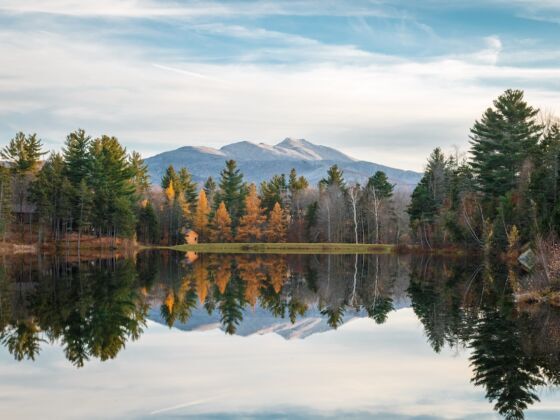Vermont‘s outdoors are unparalleled, from serene woodsy strolls that inspired Robert Frost to mountain climbs that’ll challenge any peak-bagger and everything in between. The best way to appreciate the Green Mountain State’s world-class trails is to experience them firsthand, whether that means hiking, biking, paddling, or just a leisurely stroll.
What you’ll find in the list below are 10 lesser-known routes that are certain to amaze. Combine your outings on these trails with the Leave No Trace (LNT) ethos to ensure future visitors get to enjoy Vermont’s outdoors as much as you do.
1. Hiking for the view: Harmon Hill

Photo: E Pasqualli/Shutterstock
Just outside of Bennington, this 1.6-mile hike ends with a commanding view of the southern Green Mountains. With its west-facing exposure, it’s a perfect place to watch the sunset (provided you don’t mind hiking out by dusk — make sure to pack your headlamp). Park at the Long Trail lot on Route 9, just east of town, and be prepared to climb.
LNT tip: Pick up a copy of the Long Trail map from the Wilderness Map Company to know exactly where you’re going. Preparedness is an important element of a responsible adventure.
2. Strolling in serenity: Robert Frost Trail
The outdoors has always inspired poetry. At the Robert Frost Trail near Ripton, just 20 minutes from Middlebury, you can (almost) walk in the footsteps of one of America’s greatest poets. Frost taught at Middlebury College’s Bread Loaf School of English for 42 years, and a one-mile, fully accessible trail in nearby Green Mountain National Forest pays tribute. There’s even some of Frost’s best work displayed along the way.
LNT tip: You may be moved to verse by the local flora, but limit yourself to looking, not picking. To paraphrase an old expression, “Take only inspiration, leave only footprints.” And make sure those stay on the trail, of course!
3. Bucolic biking: Delaware and Hudson Rail Trail
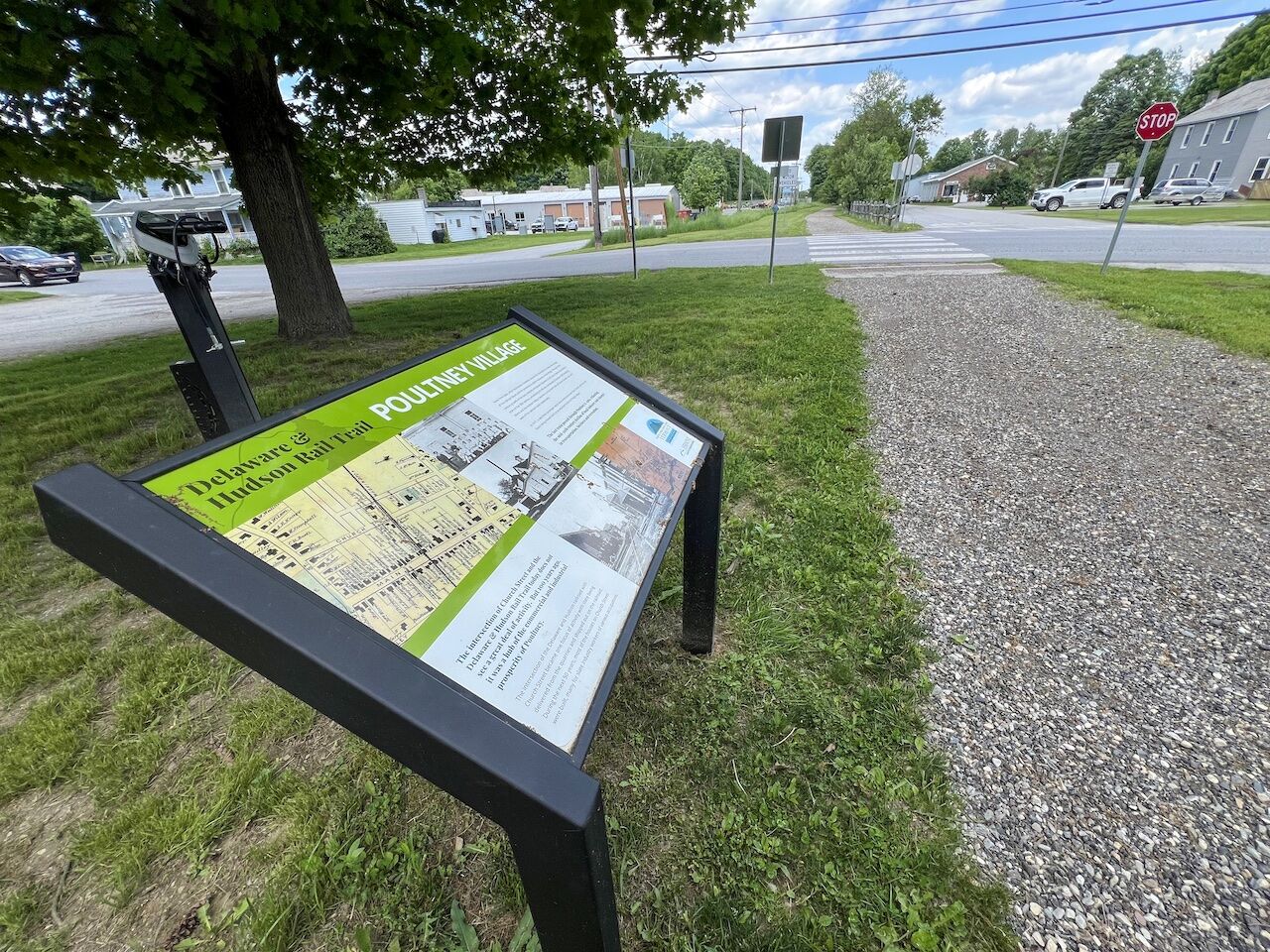
Photo: Vermont Tourism
Hard against the state’s western border is the two-section Delaware and Hudson Rail Trail, a rural ride that travels from West Rupert, through Poultney, and north to Castleton (with a brief detour into neighboring New York). The 20-mile one-way route offers four-season recreation and excellent accessibility for adaptive riders and wheelchair users. Along the way, you’ll be treated to both farmland and forest views, few people, and charming towns for restful breaks.
LNT tip: Vermont is a great place to keep it local. When it comes time to recharge, grab some goodies from the general store in Castleton or Poultney, or stop at a farm stand along the way.
4. Peak-bagging: Mt. Equinox
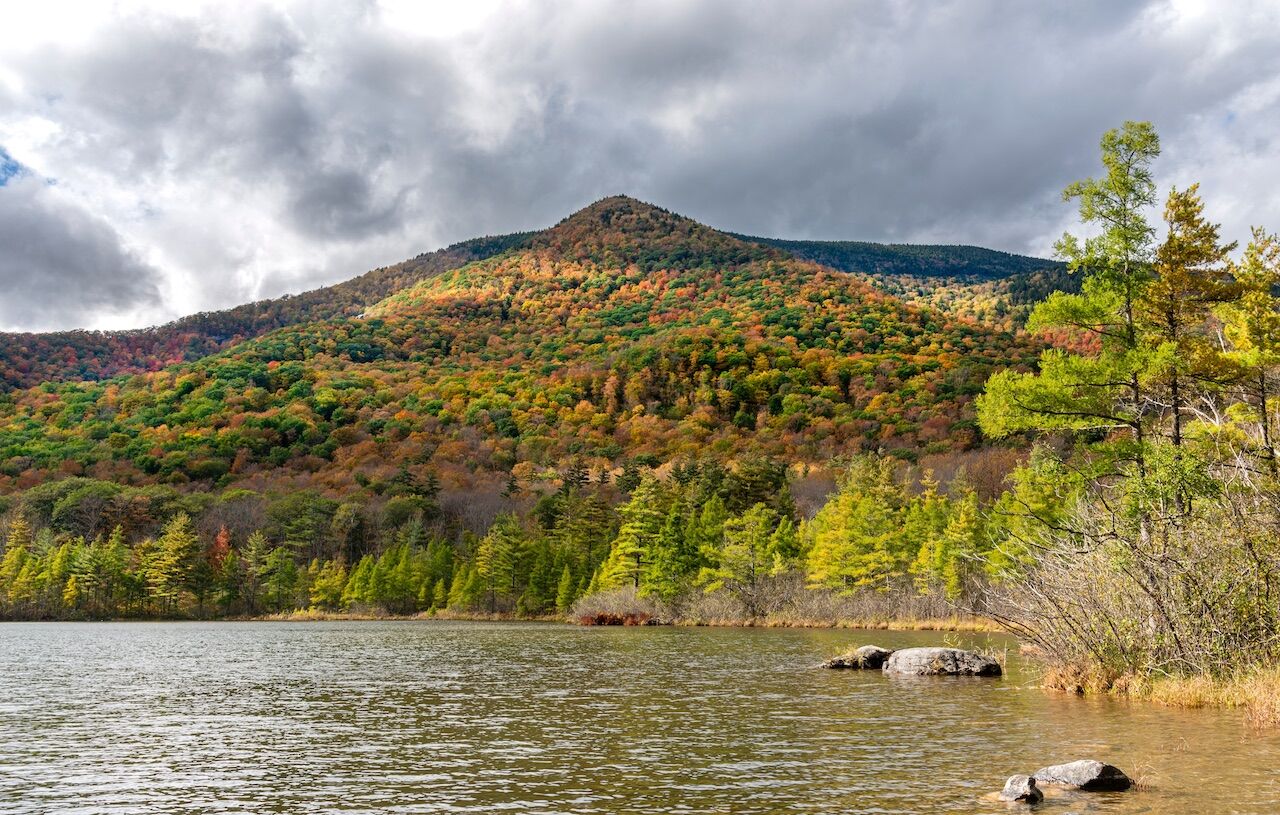
Photo: Steven Noroian/Shutterstock
This 3,840-foot-high mountain near Manchester, the most prominent in southern Vermont, is actually not a Green Mountain but the northernmost (and highest) peak in the adjacent Taconic Range. The Burr & Burton Trail (aka Blue Summit Trail) ascends steeply for 3.1 miles to the summit, which is shared with an auto toll road but has an excellent visitor center and memorable view. Be sure to stop at the spring halfway up, which gushes from the mountainside with immense power.
LNT tip: You’ll probably want some snacks to keep you fueled on this climb. Just make sure to pack out any trash you generate.
5. Mountain biking smorgasbord: Woodstock
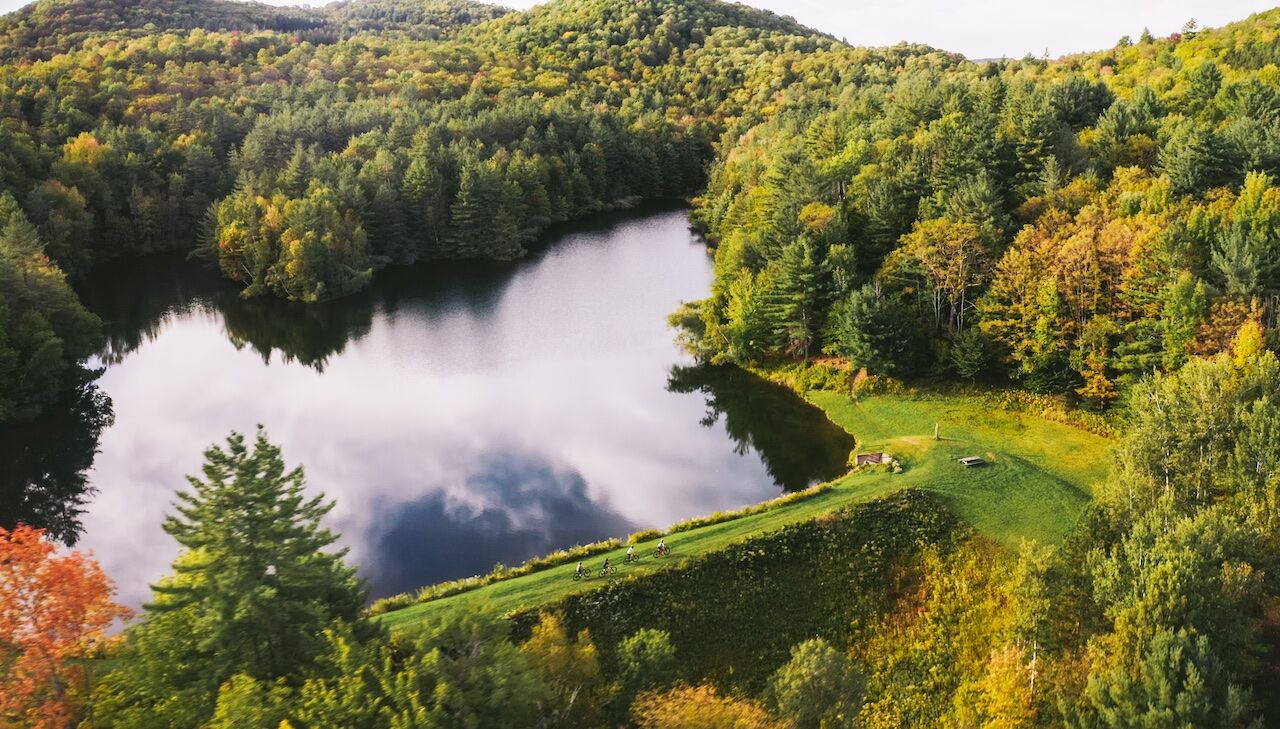
Photo: Vermont Tourism
The town of Woodstock is rapidly becoming a mountain biking capital, with three nearby networks of downhill and cross-country trails. Mt. Peg is the largest, with many miles of flowing trails for all abilities, while the 13 miles of riding at Aqueduct Trails is a close second. Meanwhile, the Saskadena Six ski resort will have even the strongest cyclists breathing hard with its steep climbs and thrilling descents.
LNT tip: Remember that riders traveling uphill on a two-way trail have the right of way.
6. Hiking in the capital: State House Trail
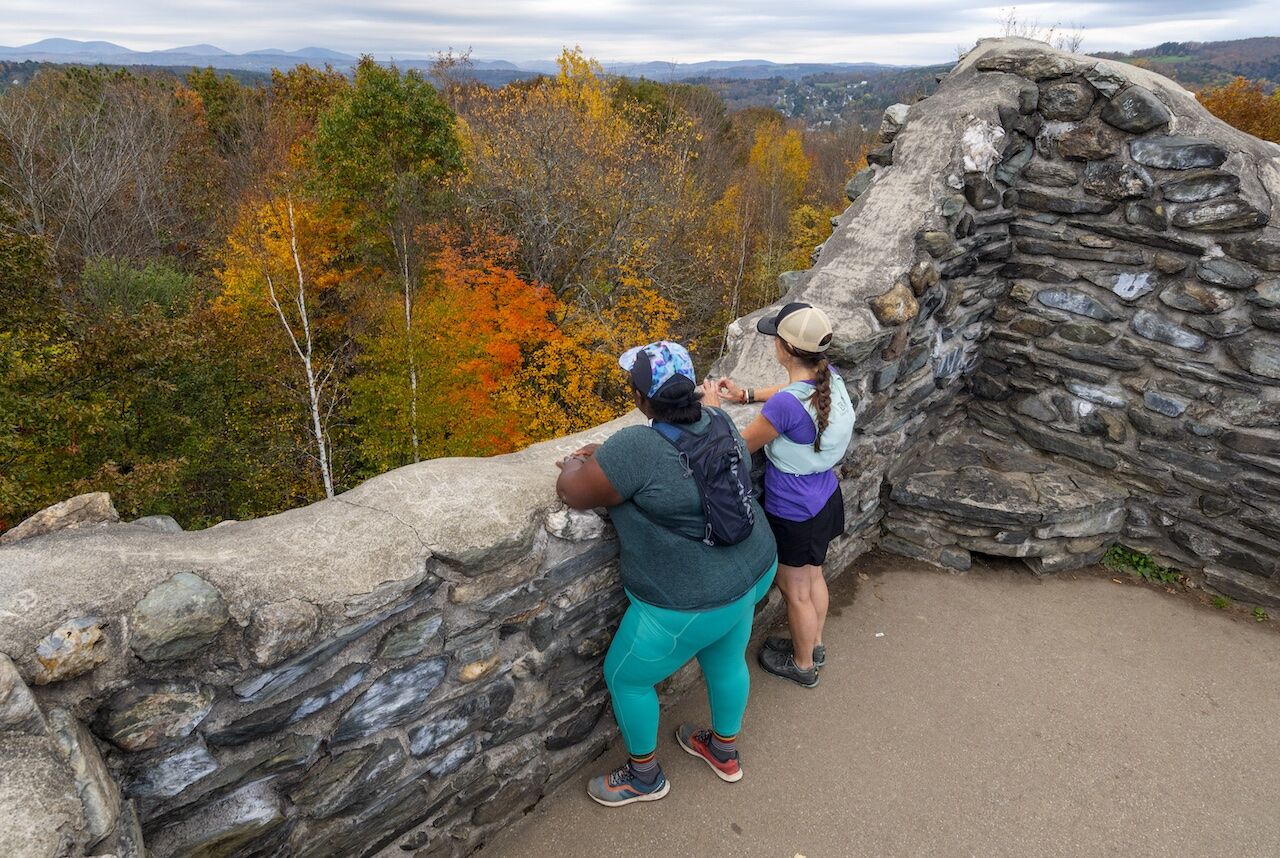
Photo: Vermont Tourism
Anybody who visits Vermont’s charming capital of Montpelier should take a short walk on this wonderful path. Right down the street from the Capitol, the gently climbing State House Trail leads through pleasant woods to a stone observation tower. Come in the morning and be back in downtown for lunch at one of several excellent local restaurants.
LNT tip: Always stay on designated trails, even during mud season, to avoid unnecessary erosion and damage to adjacent areas.
7. Biking made accessible: The Lamoille Valley Rail Trail
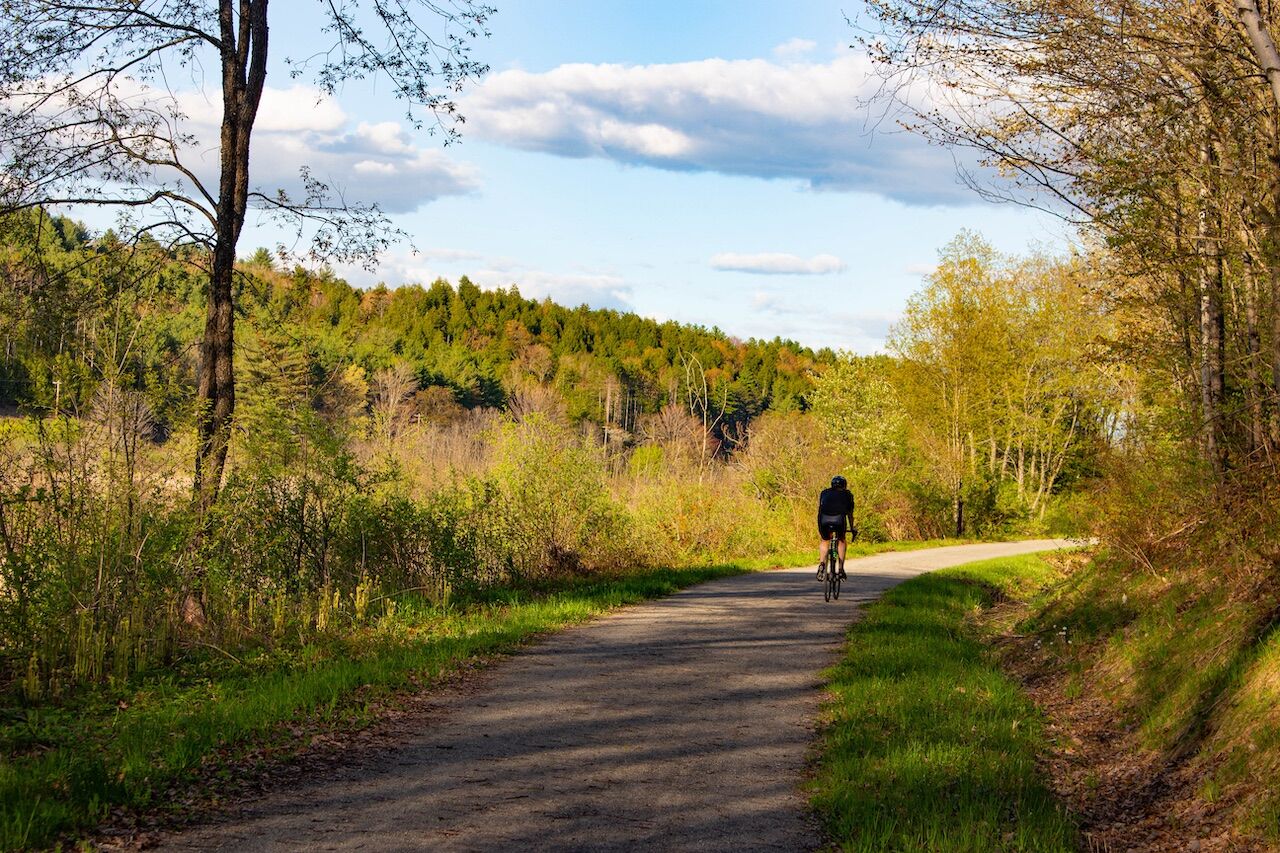
Photo: Sara B Johnson/Shutterstock
At 93 miles, the Lamoille Valley Rail Trail is the longest in New England, connecting 18 towns as it traverses the state from St. Johnsbury to Swanton. Some might choose to tackle it as a multi-day adventure or a madcap daylong ride, but most will probably bite off smaller sections for an out-and-back or one-way trip (the 15-mile stretch between Cambridge and Morristown is especially popular). You can also rent a bike, join a tour, or organize a shuttle here. Be sure to check trail conditions before you visit.
LNT tip: While riding, be sure to announce your presence while passing slower riders and pedestrians, and keep to single file if you’re in a group to leave room for folks going the other way.
8. Hiking among wildlife: Discovery Trail
Just north of the scenic Lake Champlain Islands is the Discovery Trail at the Missisquoi National Wildlife Refuge. Famous for its migratory birdlife, the preserve offers access to 6,700 acres of wildlife habitat, including the largest concentration of waterfowl on the lake. The Discovery Trail is a one-mile trail that’s accessible to all, utilizing boardwalks, gravel paths, and mowed trails.
LNT tip: When it comes to wildlife, remember: never approach, don’t feed, control your pets (or leave them at home), and avoid wild animals during sensitive times (such as winter or during mating and nesting seasons).
9. Epic paddling: Northern Forest Canoe Trail
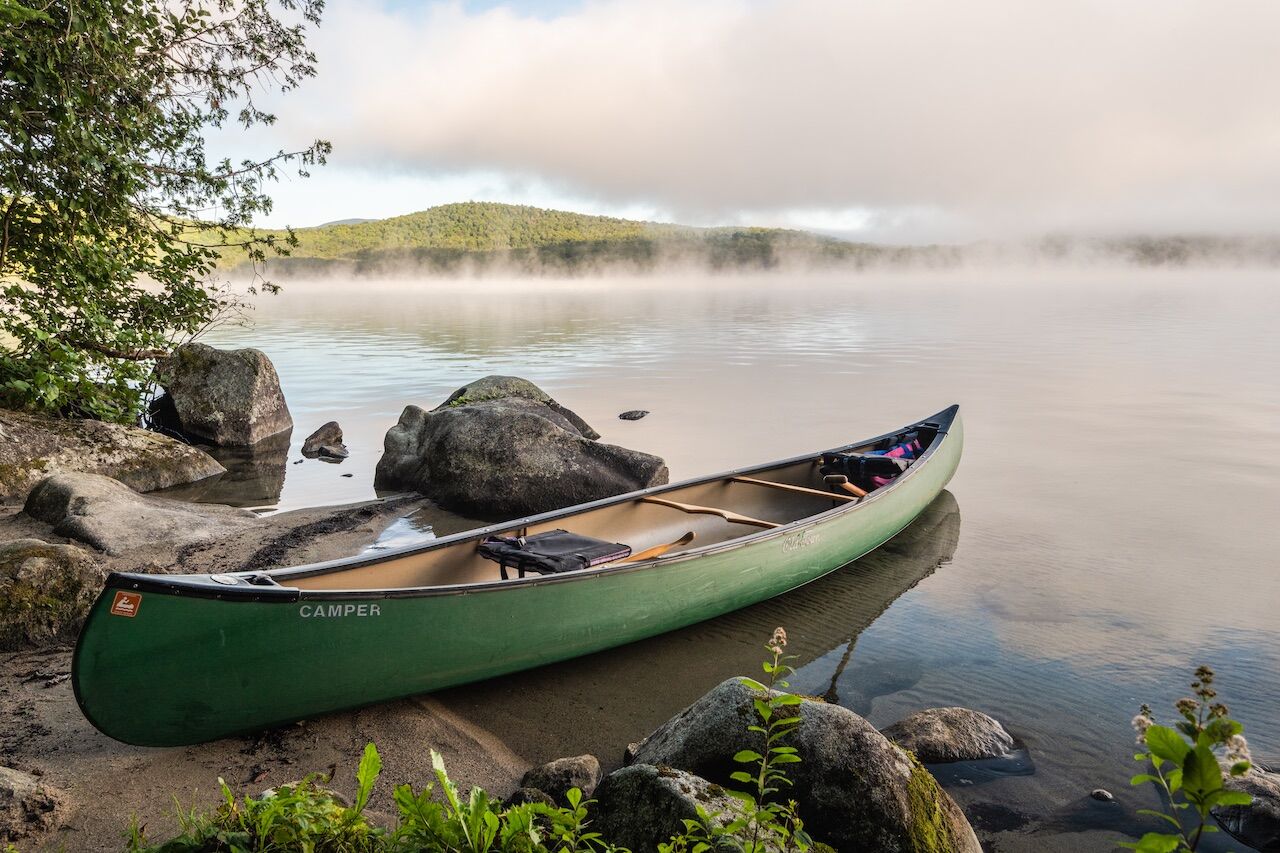
Photo: Vermont Tourism
The Northern Forest Canoe Trail is a 740-mile paddling route that meanders from the western Adirondacks to northern Maine. While you may not have the time (or inclination) to devote several months to a once-in-a-lifetime canoe adventure, Vermont has a few sections that are suitable for day trips. One is Nulhegan Fen, an eight-mile stretch of the Nulhegan River in the Northeast Kingdom. Expect endless solitude and lots of beavers (including dams you may have to portage around).
LNT tip: Clean your canoe before putting in (to avoid introducing invasive species) and be careful not to crush native vegetation as you glide through these magical waters.
10. Biking for everyone: Beebe Spur Rail Trail
At the southern end of the massive, border-spanning Lake Memphremagog is the lovely Beebe Spur Rail Trail, which skirts the lake’s eastern shoreline all the way to Canada. The four-mile rail trail is accessible to all (even dogs are welcome) and is groomed for cross-country skiing in winter. Start in Newport and head north to enjoy the amazing lake views. The name, by the way, is Algonquian for “where there is a big expanse of water.”
LNT tip: Keep your pooch in control at all times (equestrians also use the trail), and remember to bag and remove anything your pet leaves behind.
Setting your sights on Vermont’s less-trafficked trails is an LNT tip in itself. It’s also a surefire way to see just how much incredible outdoors the Green Mountain State has to offer.

